Previously on … The Delegation Deception
- Delegation doesn't get multi-6 and 7-figure business owners out of the weeds (it's not just you!)
- The volume of decisions, not just tasks, are what turn you into the bottleneck
- Your team could be making more & bigger decisions than they are right now
- To make it happen, you need a structure that supports the team's decison-making
The Visionary Operating System is a framework for structuring your business around the types of decisions to be made, rather than a constant need to delegate tasks.
When you install this structure into your business, two amazing things happen:
1
Your TEAM gets freed up to do the work they’re best at …
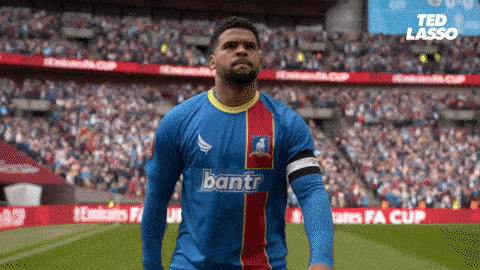
2
… and YOU don’t need to micromanage every step along the way.
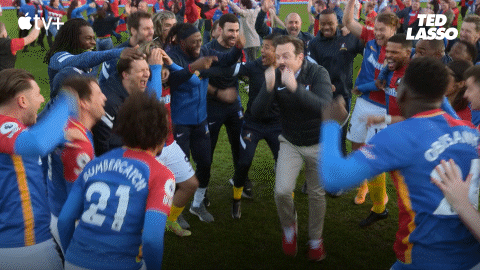
Now, people often ask me how I came to know all this stuff about business, strategy, team leadership, operations, and so on.
The truth is, it all started back in 2011 when I was working a day job.

Like most people who end up becoming entrepreneurs... I hated being an order-taker.
Following other people's rules, doing things the old way instead of the better way, having my value be measured by the time I spent doing something... it frustrated me to no end.
So, being a stereotypical overachiever, I promptly got myself promoted … and found myself in Delegation Hell:
Being constantly on call, working 60 hours per week, telling people what to do and then chasing them around to make sure it’s done properly…
It wasn’t long before I couldn’t take it anymore. I got out of dodge, started my own business…
… and quickly found myself running into the exact same problem. With a team that was supposed to be making my life easier, but no evidence (aka “free time”) anywhere in sight.
Now, I’m not one to sit on a problem. So I…
- Joined a few “high end masterminds” … where I was inevitably the most successful person in the room. While everyone else was asking “how do I hire my first VA?” I was wondering “how do I do meaningful performance reviews?”
- Enrolled in some “advanced” business coaching programs. I walked away with a pile of marketing tactics—most of which I already knew—and on the rare occasion when something new was presented, with no time or energy to implement it myself.
- And, of course, I was constantly reading: Traction, Rocket Fuel, The E-Myth, Harvard Business Review, the list goes on. They gave me a lot of theoretical knowledge, but not a lot of practical steps.
None of it helped.
Finally, I did the thing I should have done in the first place.
I asked my partner, Jill.

See, before Jill and I started working together, she spent nearly a decade working in corporate, leading teams of 3 to twelve people.
But unlike me, she wasn’t chasing her team around at all. She wasn’t working all hours, and when it came to getting things done, her team took ownership of everything.
She would set out a big-picture vision, and they’d set the goals and outcomes. They’d make the decisions about how to do it. And then they’d take full responsibility for making it happen.
(Of course, when upper management got wind of this, they promptly shut her down, telling her that she was doing it wrong… *sigh*)
As we compared notes—me with my theoretical knowledge and Jill with her hands-on experience—a framework started to emerge.
A simple method that turned traditional practices on their head, and made the idea of having a self-managing “dream team” from a dream… into a reality.
The first team we applied it to was ours, and to be honest, I made a lot of mistakes.
But over time, we tested, tweaked and refined until we had something that worked.
Not for a solopreneur with a couple of VAs, but also not for a big corporate entity with dozens of departments and hundreds of employees.
Something that worked for a business in the middle: doing a few hundred thousand dollars a year, with a handful of team members:

Shannon Hernandez (she/they)
Someone just asked me if my biz could run without me. I proudly answered yes! I spent 6 months last year learning how NOT to be my biz, putting people and systems and coaches in place, so I can be the CEO and the visionary. That felt like a hugely successful win today!

Julie Parker (she/her)
We’ve made a number of [changes], particularly when it came to what certain team members were doing in their roles. That has really helped refine those roles, and people are happier and more stable. It’s a really good thing.

Myleik Teele (she/her)
I now have time to work ON the business. I don’t think I realized how little time I had to get things done… for the FIRST time ever, I see a path to creating more while still feeling in alignment with my purpose.

Lacy Boggs (she/her)
OMG. My team manager just took something off my plate on her own for the first time!
I didn’t think I wanted to be a boss, because I didn’t want to manage. THIS IS AMAZING.
Thanks Breanne for helping me see this was an option. I need champagne at 9:30am.

Joe Taylor Jr. (he/him)
I’m no longer looking at a straight line trajectory of just knocking out 60-70 hour weeks until I fall over.
I’m putting in just the right amount to continue to steer the ship, while the team is growing and fanning out beneath me.

Keila Hill-Trawick (she/her)
I used to do everything myself. When I started this business, there was nobody but me and I did all the parts.
Then I added one person and they helped me, but I mostly did all the parts and gave them some of it.
[Now] I can focus on the other parts because I’m not constantly chasing behind.
The Visionary Operating System is that framework.
Just like a computer operating system is the thing that runs in the background, doing all the heavy lifting so that you can run your favorite apps…
A business operating system does all the heavy lifting, so that you and your team can make more sales, serve more clients, and make a bigger dent in the universe.
At its core, it involves three elements:
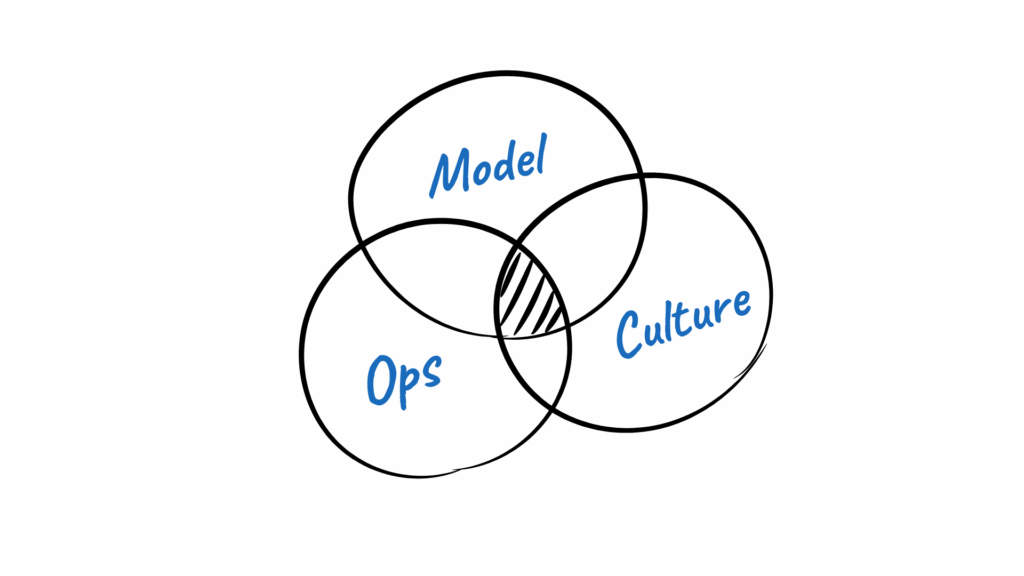
Let’s look at each of them in turn:
As you’ve seen, most business owners are told to do this by constantly delegating tasks to their team, creating systems require constant maintenance, oversight and management, and then hoping everything will work out.
The Visionary Operating System is different. With the Visionary Operating System, we focus on empowering your team to use their skills and expertise to create results for the business.
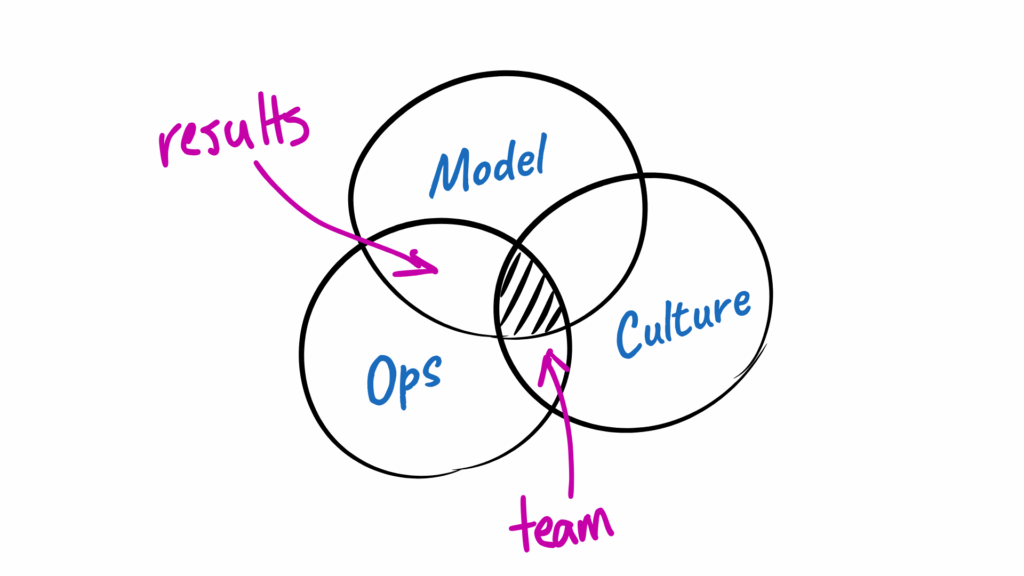
Some of the Operations pieces of the Visionary OS include:
- Freeing up 5-10 hours a week and getting you some Uncontaminated Time
- Eliminating constant interruptions, distractions and firefighting with the Weekly Momentum System
- Empowering your team with clear roles and responsibilities in Dream Team Design
By installing these components into your business, you’ll gain the confidence that everything—and everyone—on the same page and moving in the same direction… without you needing to prod things along.
Now, this doesn’t mean you can’t hop in and help a client on a call, lead a workshop, guest on a podcast, or go to a networking event. It means you don’t have to.
Whereas most business operating systems focus on doing this by turning everything into a cookie cutter, “franchisable” set of processes… the Visionary Operating System asks:
how can our team create the best results for clients, while also being as profitable as possible?
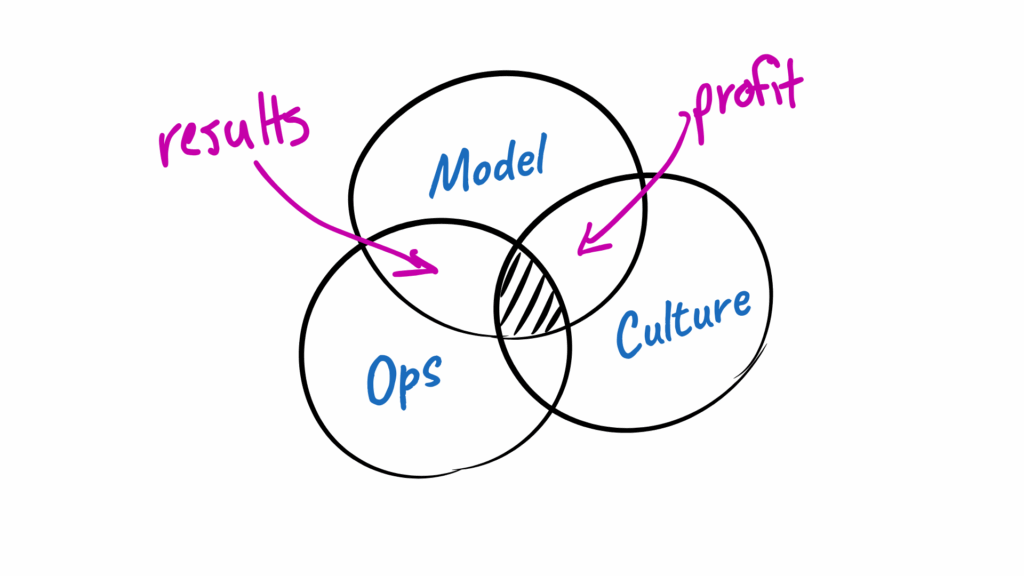
This happens through projects such as:
- Doing an 80/20 analysis that clears out the clutter in your business model and makes it easier to sell, market and deliver
- Simplifying and Streamlining your core delivery process so that you can double your profit with half the effort
- Elevating your offer structure so that it reliably stacks recurring revenue every month, and you Make Back-End Bank
When your Model is upgraded according to the Visionary Operating System, you get sales, marketing and delivery that can happen with as much–or as little–personal involvement as you want.
The goal here is simple: to create as much time, money and energy profit as possible for everyone on the team.
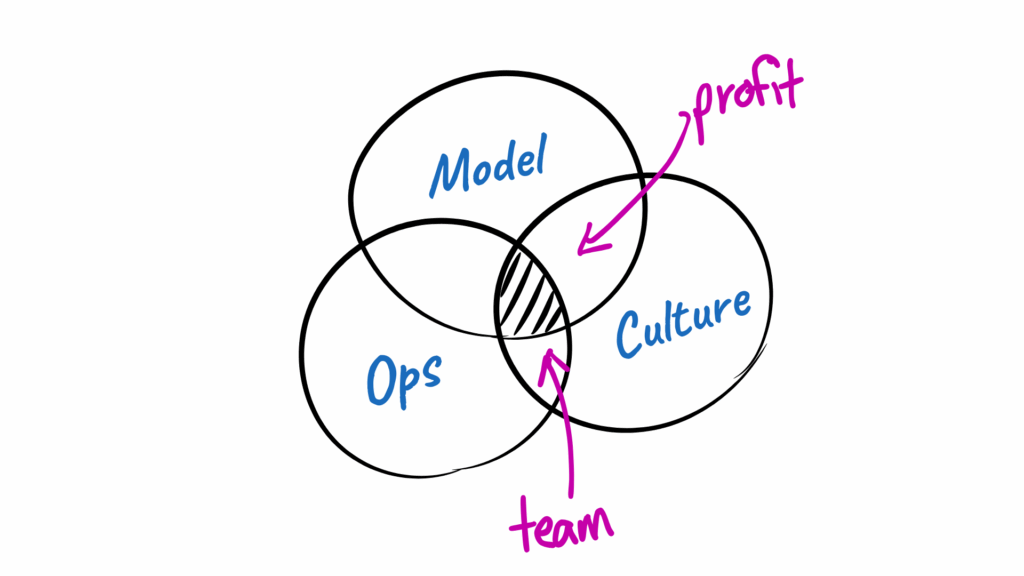
In the Visionary Operating System, that means doing things like:
- Establishing Differentiated Values that are actually useful when it comes to letting your team make aligned decisions
- Finding the right people to make those right decisions with a simple Hassle-Free Hiring
- Replacing traditional, hierarchical performance management with Metrics-Based Mentorship
Because, look, you could run an operating system that is all about you: lining your pockets and making you rich, no matter what the cost to the people around you.
Or, you could create the kind of Culture you always wanted to work for: one where every client gets results, every team member has a dream job, and you wake up every day excited by what you get to do.
I know which one I’d pick.
These three pieces are the key if you want your team taking ownership rather than waiting for work to constantly be delegated to them.
Doing this, though, isn’t about simple, surface-level changes. It’s about making deep changes to the very infrastructure of your business, including:
- How decisions are made, and
- Who is empowered to make them
But it’s critical that you do this work, because if you don’t…
Well, imagine that all the decisions in your business are like Jenga blocks.
They’re stacked up in a tower, with the whole thing resting on one, single, solitary block.
(Hint: that’s you)
Remove that one block, and the whole business topples.
Move too many elements around on the top, and the whole business topples.
And let’s be real: even if you just leave it exactly how it is…
It’s Jenga. It might still topple.

Now imagine … instead of Jenga blocks, your tower is made of Lego bricks.
Same tower, same elements, same everything —
Except that because the blocks are all interlocked and interconnected with each other…
You can build higher and stronger than ever.
You can move bricks around, and even remove the brick from the bottom and put it on top (or wherever else you want it).
And the tower won’t crumble to the ground.

This is what the Visionary Operating System creates: a business that’s strong. A model, operations, and culture that stick together. And a decision-making team that is, in aggregate, better than you could ever be on your own.
The Visionary Operating System…
- ... frees you up from endless to-dos, micromanagement, and chasing people around.
- ... frees you up from the top-down, hierarchical, outdated models preached by influencers and corporate big-wigs alike.
- ... frees you up from being “stuck in the weeds,” to having a business that can run itself at $1M, $5M, $10M and beyond.
Because while most online business owners are out there focusing on the tactical decisions—how to get more leads, more sales, more clients, more marketing channels and more work …
We know that this outdated approach only ever leads to one place; with you:
- Unable to step away and take a real vacation, lest some emergency arises
- Broke and out of cash, trying to cover all their ever-increasing expenses
- Spending all your time micromanaging and putting out fires, with only duct-taped systems and processes holding everything together
And what the rest of the world doesn’t realize (but you now do!) is that the very solutions they’re telling you to implement only compound the issue, making it worse instead of better.
That’s why we take a completely different approach.
Because it’s not just about making more money with less effort.
It’s about creating a limitless, scalable company that will have an impact far greater than you ever could on your own.
That is when you get stories like these:

Anna Wolf
Marketing Agency
Delegating had taken over Anna's life. She'd tried hiring someone to take it off her plate four times: an Integrator, a COO, an OBM, and a project manager. Every time, the work landed up right back on her plate. Turns out, she didn't need any of those...
"What I really needed was a managing editor, because that's what I was doing that every single day. I didn't have time to do anything else because I was editing all of our writers' work every day." (Visionary CEO Podcast, S03E04)
As a result of restructuring her team, Anna went from stuck at $800k, down in the weeds, spending too much time managing people ... to $1M collected in a year, with a new team structure that finally got her out of the day-to-day.

Linzy Bonham
Online Education For Therapists
Being "everywhere" on social media was driving Linzy (and her team) to distraction. That is, until she started letting her team drive some of the decisions around marketing...
"We still have the same players in place, but they can really focus on their zones of genius and joy... It's really energized my team, because we each get to focus on something we really want." (Visionary CEO Podcast, S03E07)
Now, Linzy's not having to drive marketing forward. Her team's bringing ideas—and not just ideas, but ideas that they're excited to implement. And that means they're constantly pushing the bar upward and doing things better.

Patrice Perkins
Legal Services for Creatives
Patrice Perkins is a self-described "Type-A Personality" who really loves the work she does. The problem was, she kept getting pulled back into problem solving mode—even when someone else could have solved it better. When she started letting her team decide how to solve the problems...
"Allowing my team to solve the problem created a new sense of ownership. It led to increased confidence [in them]: 'I can not only do this role, but help make decisions that are key for the business in a way that serves us all.'" (Visionary CEO Podcast, S03E03)
But the biggest shift Patrice saw? Was in the level of competence her team started displaying. Their increased proactivity not only freed Patrice up immensely—but has led to the firm being able to take on even bigger clients and projects.

Shannon Hernandez
Online Programs & Consulting
Shannon was the quintessential online business owner: she was the face of the brand. She was the personality of the brand. She was the creator of the frameworks and IP. And clients only wanted to work with her... or so she thought.
"What I can tell you is, people want results. This [mindset shift] has allowed us to scale. This has allowed us to make more money. This has allowed me to bring in other coaches who are working with clients." (Visionary CEO Podcast, S03E01)
By shifting away from being the only decision-maker in the business, Shannon was able to finally be free: taking 197 days off, while generating around $400,000 with more joy than she'd previously thought possible.

Joe Taylor Jr.
User Experience Consulting
Early on in his business, Joe felt like he needed every member of his team team to deliver every piece of output exactly the way that he had been doing it, which meant that he was inspecting every deliverable before it went to a client. It clearly wasn't sustainable, and Joe knew something needed to change.
"I had to let go of a lot of the rigid structure that I had put in place because I'd assumed it's what our clients wanted. And the humbling realization here is that the clients didn't really care how we got the results we did or who did that work. " (Visionary CEO Podcast, S03E06)
Fast forward a few years, and Joe's running with a leaner team, compensating their team better than they ever had before, and their profit margin is consistently the highest it's ever been.

Keila Hill-Trawick
Boutique Accounting Firm
Keila Hill-Trawick had thought hiring people would make life easier. Newsflash: it didn't. She tried writing SOPs to help. And again ... it didn't. The problem, she came to realize, was that her team needed to be set up to make decisions:
"When I started this business, there was nobody but me and I did all the parts. Then I added one person and they helped me, but I mostly did all the parts and gave them some of it. [Now], I can focus on the other parts because I'm not constantly chasing behind." (Visionary CEO Podcast, S03E06)
As Keila transitioned more decisions to her team, they not only stepped up, but have been thriving with their new responsibilities. In her words, it's like when a child grows up and starts doing their own laundry: "I'm like, are you sure you don't need me? And they're like, I got it—I don't need you to touch it."
As you can see, the Visionary Operating System is designed to free you up by tapping into the brilliance of your team.
It empowers them to make decisions in a way that actually creates bigger growth, higher profit margins, better client results, and a happier team…
All while you get to do more of the things you love, inside the business and out.
Most importantly…
…it works.
- It works for agency owners like Anna and Joe
- It works for educators & coaches like Linzy and Shannon
- It works for professionals like Keila and Patrice
From businesses doing $300k per year, to businesses doing $300k per month…
Selling direct to consumer, to other small business owners, or to enterprise…
With teams ranging in size from 3 to 15…
It works.
Why?
Because this isn’t the same repackaged version of the same “solutions” you’ve been sold before. You know, the ones built by (and for) white dude bro influencers and their corporate corner office counterparts.
No, this framework is built on actual people-first principles.
It's based on not just "having diverse voices" in the room...
But on putting those voices in places where they are able to lead.
It's based on not just "including" people in the conversation...
But on listening to & benefitting from what they have to say.
It's based on not just saying "equity matters"...
But on actually treating every person as a person—first, last and always.
And so look ...
If you’re happy to keep doing things the way you have been … then have ‘atter.
And if you want to take what you’ve learned here, and implement it on your own—you now know exactly what to do.
But if you’re done wasting time trying to figure out how to put all the pieces together on your own, and you’re ready install the only Operating System that empowers your team, grows your business, and will actually free you up…
Then let’s make it happen; all the details are on the next page.